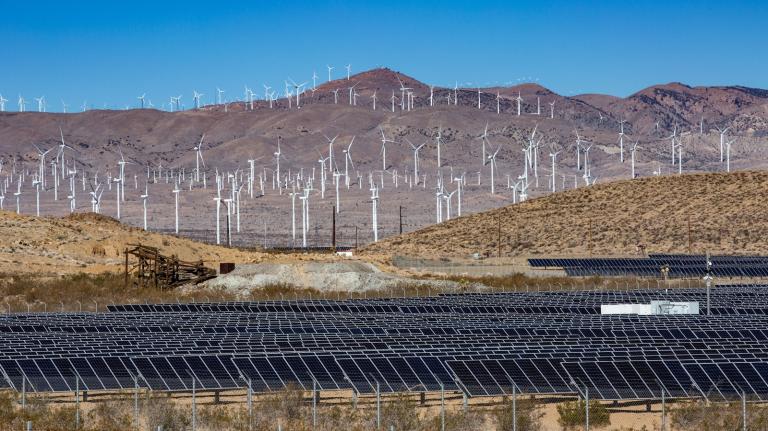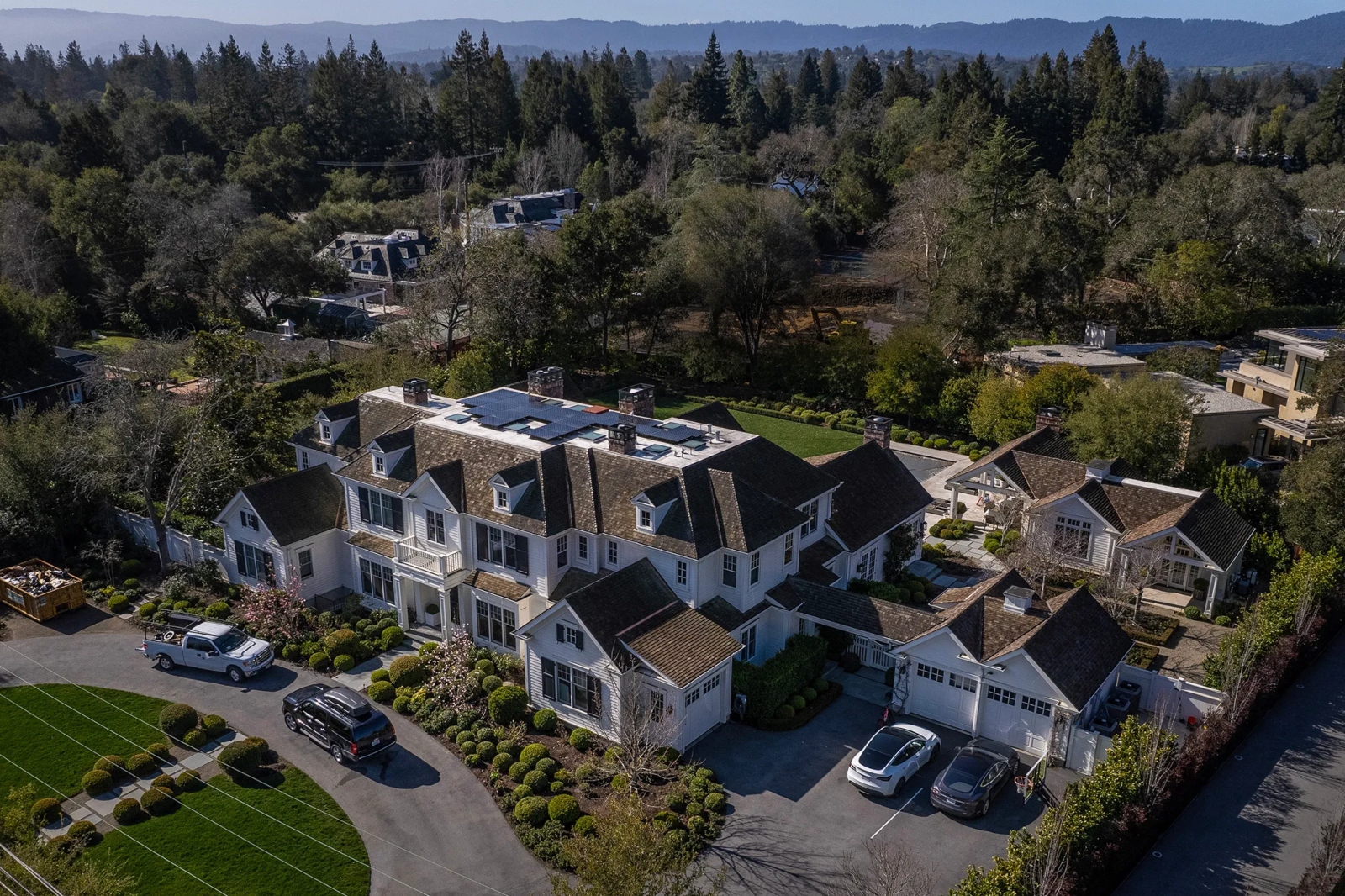This story was originally published by CalMatters and is republished with permission.
In Atherton, one of the nation’s richest towns, giant oaks and well-manicured hedges surround gated mansions owned by some of Silicon Valley’s most prominent billionaires, basketball stars, tech executives, and venture capitalists.
Each set on an acre of land, six-bedroom estates, brick-paved pathways, neoclassical statues, and cascading fountains are on full display. But increasingly, another status symbol has been parked in these driveways: a shiny electric car — sometimes two.
This tiny San Mateo County community — with an average home value of almost $7.5 million and average household income exceeding half a million dollars — has California’s highest percentage of electric cars, according to a CalMatters analysis of data from the Energy Commission. About one out of every seven, or 14 percent, of Atherton’s 6,261 cars are electric.
CalMatters’ statewide analysis of ZIP codes reveals a strikingly homogenous portrait of who owns electric vehicles in California: Communities with mostly white and Asian, college-educated, and high-income residents have the state’s highest concentrations of zero-emission cars. And most are concentrated in Silicon Valley cities and affluent coastal areas of Los Angeles and Orange counties.
This racial and economic divide may be unsurprising — but it illustrates the mammoth task that California faces as it tries to electrify its 25 million cars to battle climate change, clean up its severe air pollution, and reduce reliance on fossil fuels. Under a state mandate enacted last year, 35 percent of cars sold in California, beginning with 2026 models, must be zero-emissions, ramping up to 68 percent in 2030 and 100 percent in 2035.
But if people who buy electric cars are largely white or Asian, highly educated, wealthy, coastal suburbanites, will the state’s transformation succeed? Will new electric cars be attainable for all Californians — no matter their race, income, and location — in the coming decade?
High upfront vehicle costs, lack of chargers for renters, and inadequate access to public charging stations in low-income and rural communities hamper California’s ability to expand EV ownership beyond affluent parts of the Bay Area and Los Angeles area.
The cost of new electric cars is the most obvious factor driving the racial and income disparities in who buys them: The average as of February was $58,385 — about $9,600 more than the average car — although it dropped from about $65,000 last year. Lower-end fully electric cars start around $27,500.
Kevin Fingerman, an associate professor of energy and climate at California State Polytechnic University Humboldt, said the primary reason why more people in white, affluent, college-educated communities own electric cars is that they tend to be early adopters of new technology, with easier access.
“California is prioritizing the rapid electrification of the light-duty vehicle sector and it’s right in doing so. But it’s going to be important in the process to make sure that there is equitable access,” said Fingerman, who co-authored a study on racial and income disparities to electric vehicle charging.
To rapidly electrify the fleet, state officials must address the roadblocks causing the wide gaps in electric vehicle ownership: Expanding the state’s public and in-home charging networks, funding more rebates for low and middle-income residents, and increasing the pool of used electric cars. The goal is to give consumers confidence in the reliability and affordability of the cars and reduce their anxiety about limited range and charging availability.
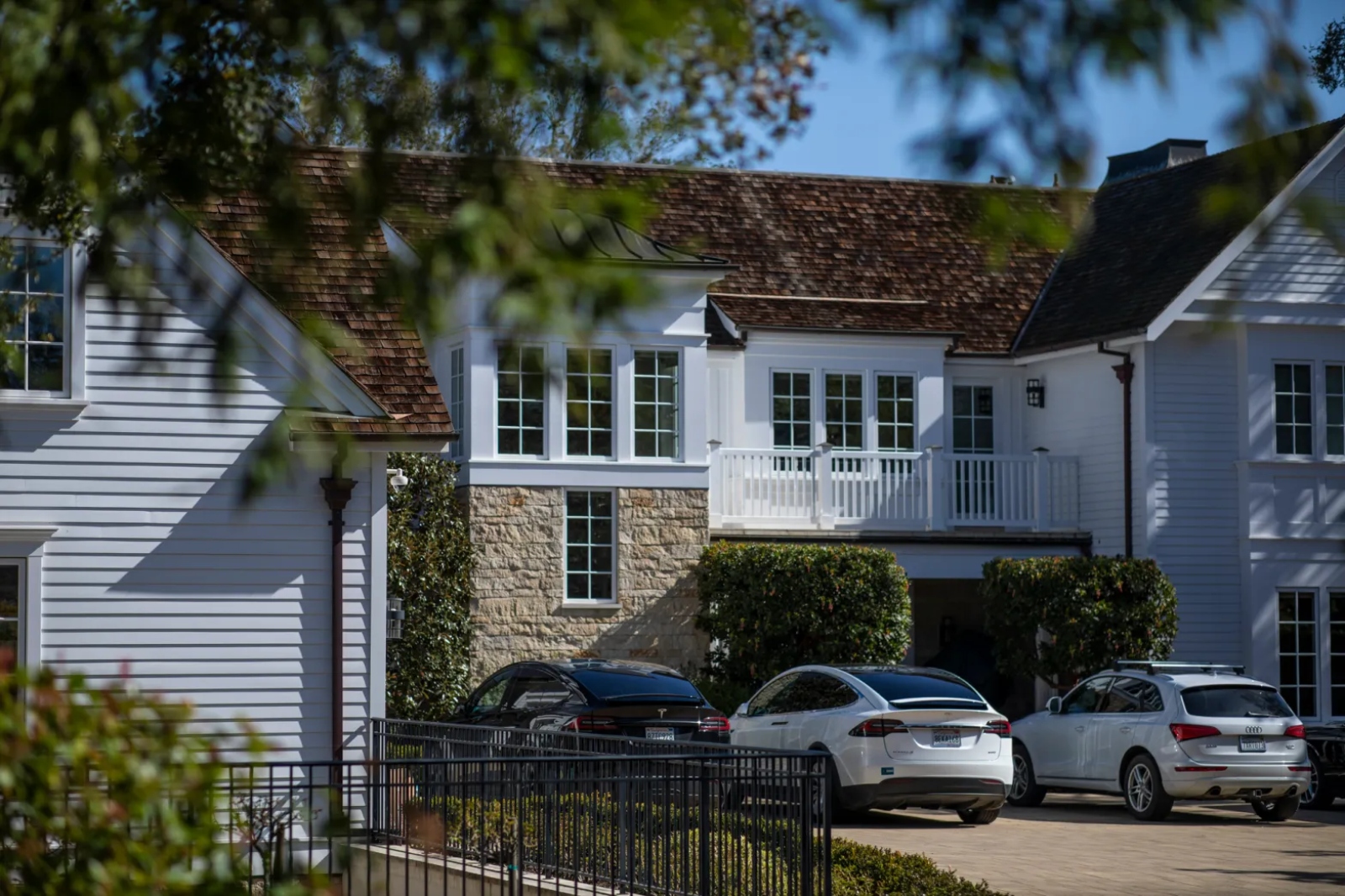
“As more electric vehicles are on the road, we’re going to need to be creative about policy solutions to address those issues to make sure that the benefits of owning an electric vehicle are shared across the demographics in the state of California and beyond,” Fingerman said.
A portrait of electric car hotspots
About 838,000 electric cars were on California’s roads in 2021, and under the state mandate, it’s expected to surge to 12.5 million by 2035.
No statewide data exists to break down the race or other demographic characteristics of California’s car buyers. But CalMatters compared the ZIP codes of 2021 electric car registrations with Census information on the race, income, and education of people in those ZIP codes. (Electric cars include battery-only models, plug-in hybrids and fuel-cell electric vehicles. ZIP codes with fewer than 1,000 residents were excluded from the analysis.)
California’s highest concentrations of electric cars — between 10.9 percent and 14.2 percent of all vehicles — are in ZIP codes where residents are at least 75 percent white and Asian. In addition to Atherton, that includes neighborhoods in Los Altos, Palo Alto, Berkeley, Santa Monica, and Newport Coast, among others.
In stark contrast, California ZIP codes with the largest percentages of Latino and Black residents have extremely low proportions of electric cars.
In the 20 California ZIP codes where Latinos make up more than 95 percent of the population — including parts of Kings, Tulare, Fresno, Riverside, and Imperial counties — between zero and 1 percent of cars are electric.
And 17 of the 20 communities with the highest percentage of Blacks have between zero and 2.6 percent electric cars. (Los Angeles’ relatively affluent Ladera Heights and two Oakland ZIPs have between 3.3 percent and 4.7 percent.)
Still, not all communities with a lot of electric car drivers are majority white. Four of the top 20 EV ZIP codes have more Asian residents than white. For instance, more than three-quarters of residents in Fremont’s 94539, which is ranked 14th with 11.4 percent of registered cars electric, are Asian.
Income seems to be a main driver of the disparities, according to CalMatters’ analysis. Most of the median household incomes in the top 10 exceed $200,000, much higher than the statewide $84,097. Typical home values in those communities exceed $3 million, according to Zillow estimates.
In contrast, electric cars are nearly non-existent in California’s lowest income communities: only 1.4 percent of cars in Stockton’s 95202, where the median household income is $16,976, and 0.5 percent in Fresno’s 93701, where the median is $25,905. Most are plug-in hybrids, which are less expensive.
Also, at least three-quarters of residents in the top 10 communities for electric vehicle ownership have a bachelor’s degree or higher.
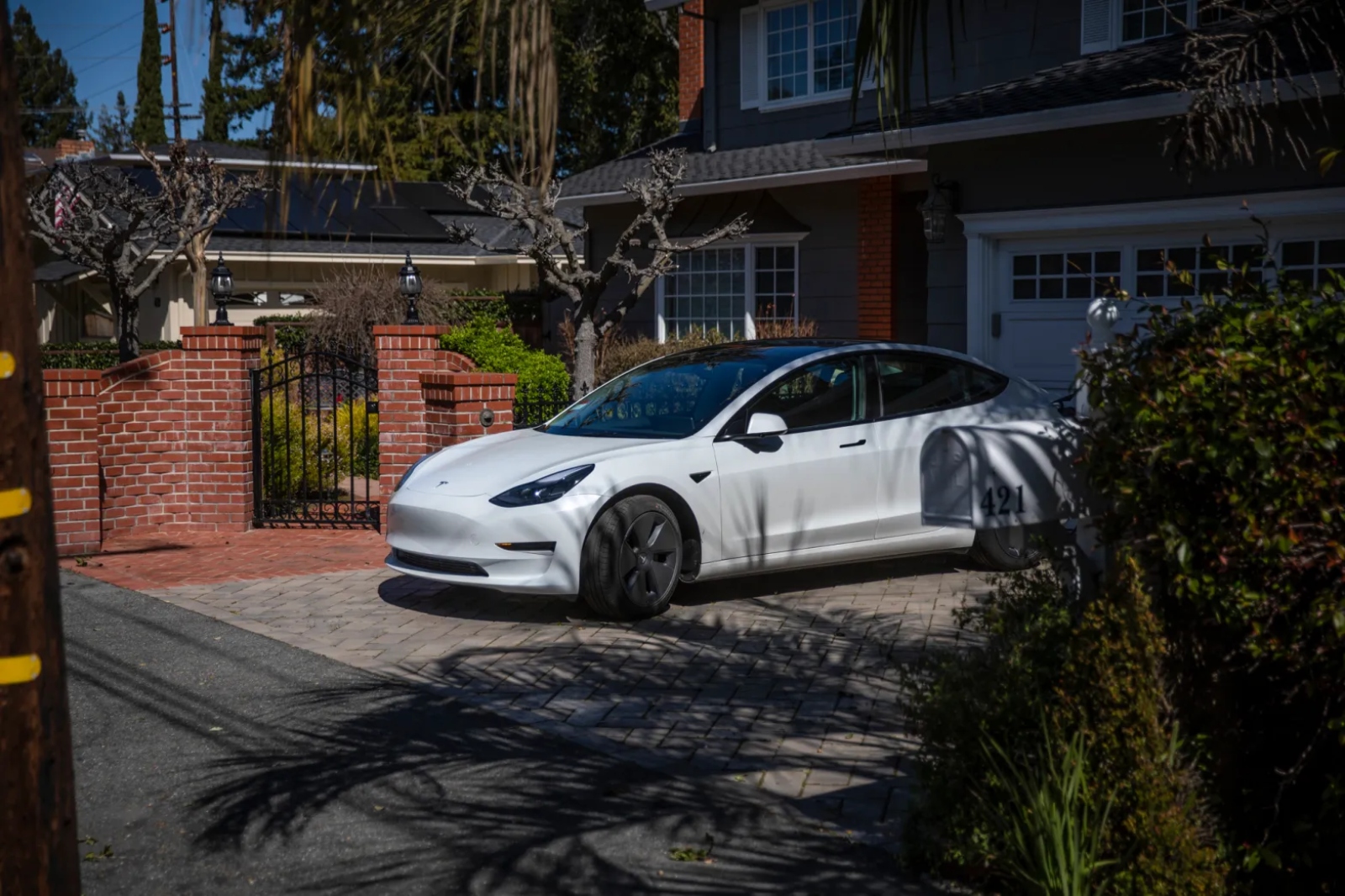
Rural and remote parts of the state — even the entire Central Valley — also are left out of the top ZIP codes with electric cars. With limited charging access, rural residents who drive long distances fear they’ll get stranded if their car runs out of juice.
“It makes sense why we would see way more concentrations of EVs in densely urban areas or populated areas,” Fingerman said. “The barriers to people owning electric vehicles across the demographics in the state are real. But they’re solvable.”
Black and Latino residents — who make up almost half of California’s population — are less than half as likely as whites to have access to a public charger, according to the study Fingerman co-authored. Disparities in access are also higher in areas with more multi-unit housing, the study showed.
Yet interest in electric cars is high across all incomes and races, according to a 2019 survey conducted by Consumer Reports and the Union of Concerned Scientists.
About a third of survey respondents making $50,000 to $99,999 a year and under $50,000 a year expressed some interest in an electric car as their next purchase. People of color also expressed interest, with 42 percent saying they would consider an electric vehicle as their next car.
Affordability: ‘The average person can’t afford to buy’ an EV
Christopher Bowe, 48, of Hayward in Alameda County, considers himself an early adopter of new technology. He purchased his electric Ford F150 Lightning new for $70,000 late last year.
Bowe lives in a ZIP code where only 2 percent of cars are electric, but he lives next to Fremont’s 94539, where it’s 11.4 percent, so he regularly sees a lot of drivers with electric models.
Bowe, who makes a little more than $100,000 a year working for FedEx, said his income and living situation made it easy for him to opt for an electric vehicle: He lives in a single-family house with residential solar, which allows him to charge at home and keep his electric bill low.
Bowe had always been interested in buying an electric vehicle, but finding a pickup truck that suited his needs was a challenge for years. The 2022 F-150 Lightning was one of the first electric trucks to hit the market, and it sold out quickly.
“I’ve always been a truck guy and everything previous was kind of small, underpowered,” he said. “I’m a 300-pound guy. I like being up above the traffic and being able to see out in front of me. It fits my body size better.”
Bowe worries that the state’s 2035 timeline for 100 percent new electric models could be moving too fast because of the lack of affordable options. He said automakers should be given incentives to offer more affordable options.
The California Air Resources Board did build some incentives into its mandate: Automakers qualify for credits toward meeting their zero-emission sales target through 2031 if they sell cars at a 25 percent discount through community-based programs, or if they offer passenger cars for less than $20,000 and light trucks for under $27,000.
Automakers say they are working to speed up production and develop more affordable models. Tesla in January slashed prices for all models by 20 percent, which made the cars eligible for a $7,500 federal tax credit. Base prices are now $55,000 and $90,000. Two weeks later, Ford cut the price of its most popular Mustang Mach-E by 6 percent to 9 percent, to a starting price of $46,000.
“We are producing more EVs to reduce customer wait times, offering competitive pricing and working to create an ownership experience that is second to none,” said Marin Gjaja, Ford’s chief customer officer. “We will continue to push the boundaries to make EVs more accessible for everybody.”
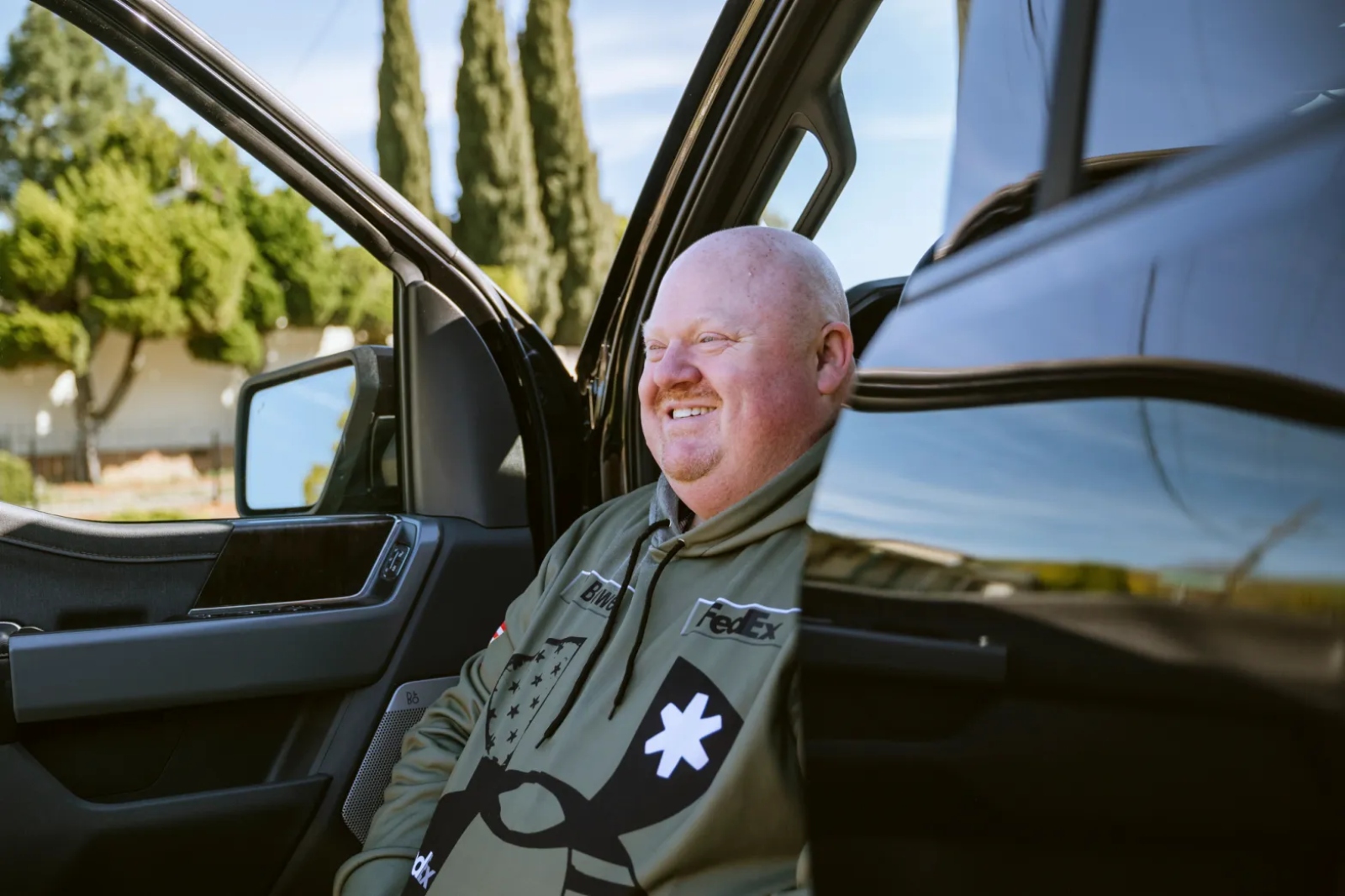
David Reichmuth, a senior engineer at the Union of Concerned Scientists who studies EV market trends, said the state’s mandate will help drive the market and lower prices, narrowing the gap between electric models and gas cars over the next 12 years.
“We know that new car buyers, both gasoline and EV buyers, are more affluent than the general population and more affluent than used car buyers,” Reichmuth said. Nearly half of all new cars nationwide are bought by households with incomes exceeding $100,000, according to his study based on 2017 data. “As the new rules kick in, we’re going to see a greater number of options go electric. That’s also going to make these vehicles more affordable.”
In the meantime, state and federal rebates and grants are critical to making the vehicles more affordable, said air board spokesperson Melanie Turner.
The air board last year approved $326 million in purchase incentives for low-income consumers, Turner said. Eligible residents can receive up to $15,000 for a new electric car and up to $19,500 for trading in a gas car — an increase of $3,000 from the state’s previous offerings. The programs accept applications from residents with incomes at or below 300 percent of the federal poverty level — equivalent to $43,740 for an individual or $90,000 for a family of four.
In recent years, however, the programs have experienced inconsistent and inadequate funding. Last year low-income consumers were turned away — funding had run out and waitlists were shut down because of backlogs.
Problems with the Clean Vehicle Assistance Program were resolved last year, Turner said. “We paid all the applications on the reservation list and we are getting ready to reopen the program with new criteria soon,” she said.
The state credits can be combined with new federal tax credits under the Inflation Reduction Act. Through 2032, eligible car buyers — with caps on income and price – can get up to $7,500 for a new electric vehicle and up to $4,000 for a used one.
“We are hoping this boost in incentives for clean car purchases will help to make a difference,” Turner said.
Electric cars require far less maintenance and have lower operating costs than their gas-powered counterparts, making them less expensive over time. Car drivers will save an estimated $3,200 over 10 years for a 2026 electric car compared to a gas-powered car, and $7,500 for a 2035 car, according to the air board’s estimates.
‘We need better options for renters’
Charging remains one of the biggest concerns for people who own or are interested in buying an electric vehicle. California has about 80,000 public chargers, with another estimated 17,000 on the way. But the state will need 1.2 million for the 7.5 million electric vehicles expected on the roads by 2030.
Many people residing in apartments or condominiums are reliant on public charging stations because they don’t have chargers in their buildings’ parking garages. A standard level 2 charger costs between $500 and $700, plus installing an electricity meter costs $2,000 to $8,000 or more, according to Pacific Gas & Electric.
Urvi Nagrani, 35, of Los Altos in Santa Clara County, charges her 2021 Chevy Bolt at public stations. She lives in an accessory dwelling unit with no home charger.
“People living in Silicon Valley have home chargers,” she said. “But we need to have better options for renters because it hasn’t gotten much better for me as a renter.”
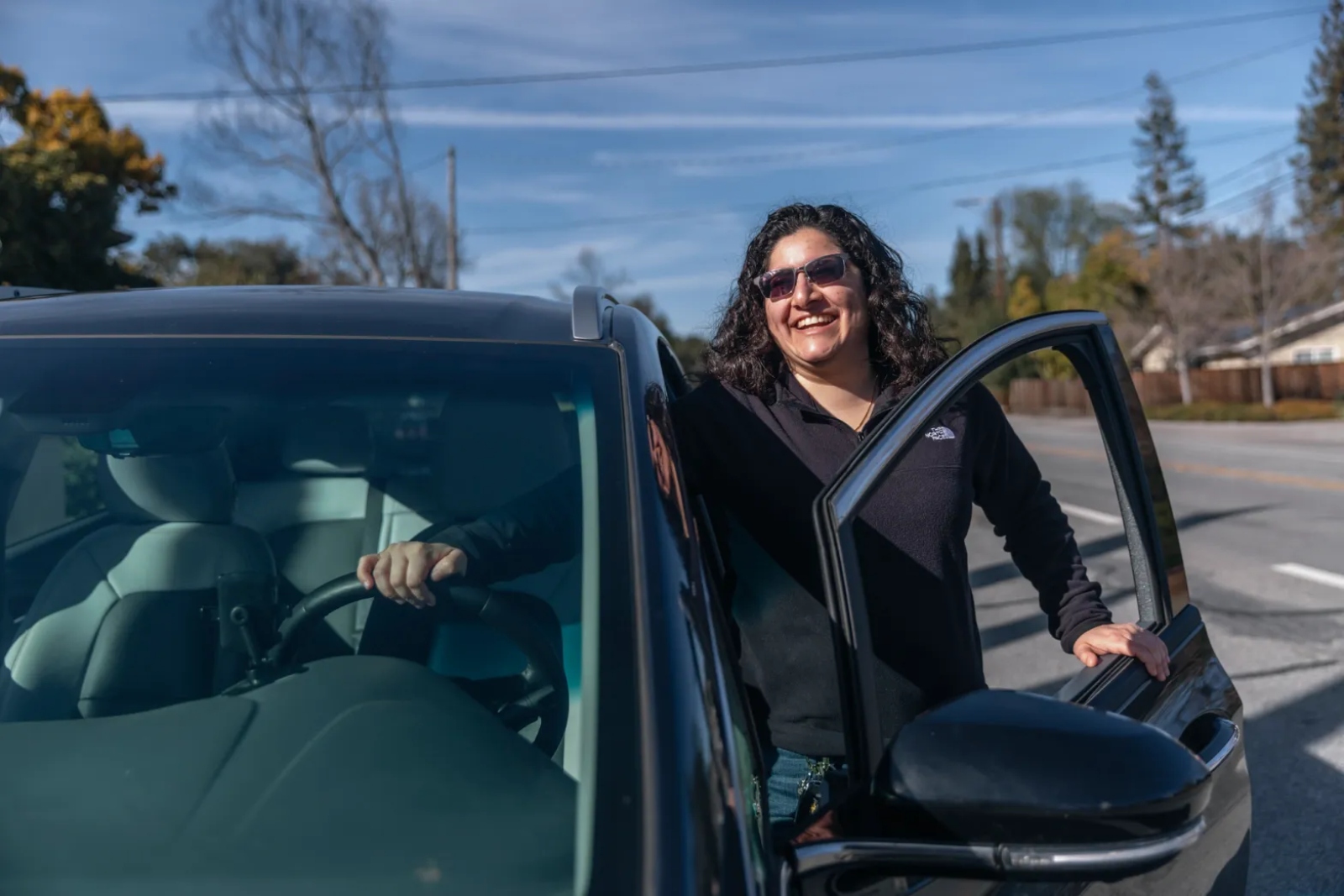
ZIP code 94024, where Nagrani lives, ranks fifth statewide in percentage of electric vehicles. Of its 19,089 car registrations, 13.4 percent are electric. Nagrani said there are plenty of public charging stations available — but some are broken or occupied, with long wait times.
Even worse, she often takes long road trips and experiences many more challenges finding reliable chargers on the road. Navigating the apps showing locations of charging stations can be confusing.
“There are trade-offs,” she added. “I got my EV with very clear eyes.”
Nagrani said she leased her Chevy Bolt for $196 per month when she had a $180,000-a-year job. She was recently laid off from her tech job, joining thousands of others in the Silicon Valley who are suddenly unemployed.
Richard Landers, 75, a retiree in Santa Monica, earns more than $200,000 a year from his investments. He loves his Tesla 2015 Model S, which he bought new for about $90,000 that year.
“It’s a wonderful drive, I have had essentially no maintenance requirements in seven years and I feel good — not perfect, because it’s still a car — about my reduced environmental impact as a driver,” he said.
Landers, who lives in a mid-rise condominium, said he wouldn’t have switched to an electric vehicle if he couldn’t charge his car in his garage. Landers had Southern California Edison install an electric meter and hired an electrician to equip his parking space in the condo’s garage with a charger, which cost him about $2,500, he said.
Landers’ 90402 ZIP code ranks sixth on the list of California areas with the highest percentage of electric vehicles — 13.3 percent of its 8,178 cars. But even there, charging is a big problem for his neighbors in Santa Monica’s multi-family dwellings, he said.
“Having the ability to charge at home is very important to making electric vehicles attractive and practical for most people,” he said.
Landers worries that delayed progress in installing chargers in multifamily buildings could delay the transition to electric vehicles.
It’s a widespread problem that state leaders have been trying to address. By January 2025, a new law passed last year will require the state to adopt regulations requiring businesses to install charging stations in existing commercial buildings. Another 2022 law will require new and existing buildings, including hotels, motels, and multi-family dwellings, to install charging stations.
The state is helping fund some of these chargers through grants, including a recent investment of $26 million for 13 projects in multi-family homes, said Hannon Rasool, director of the California Energy Commission’s fuels and transportation division.
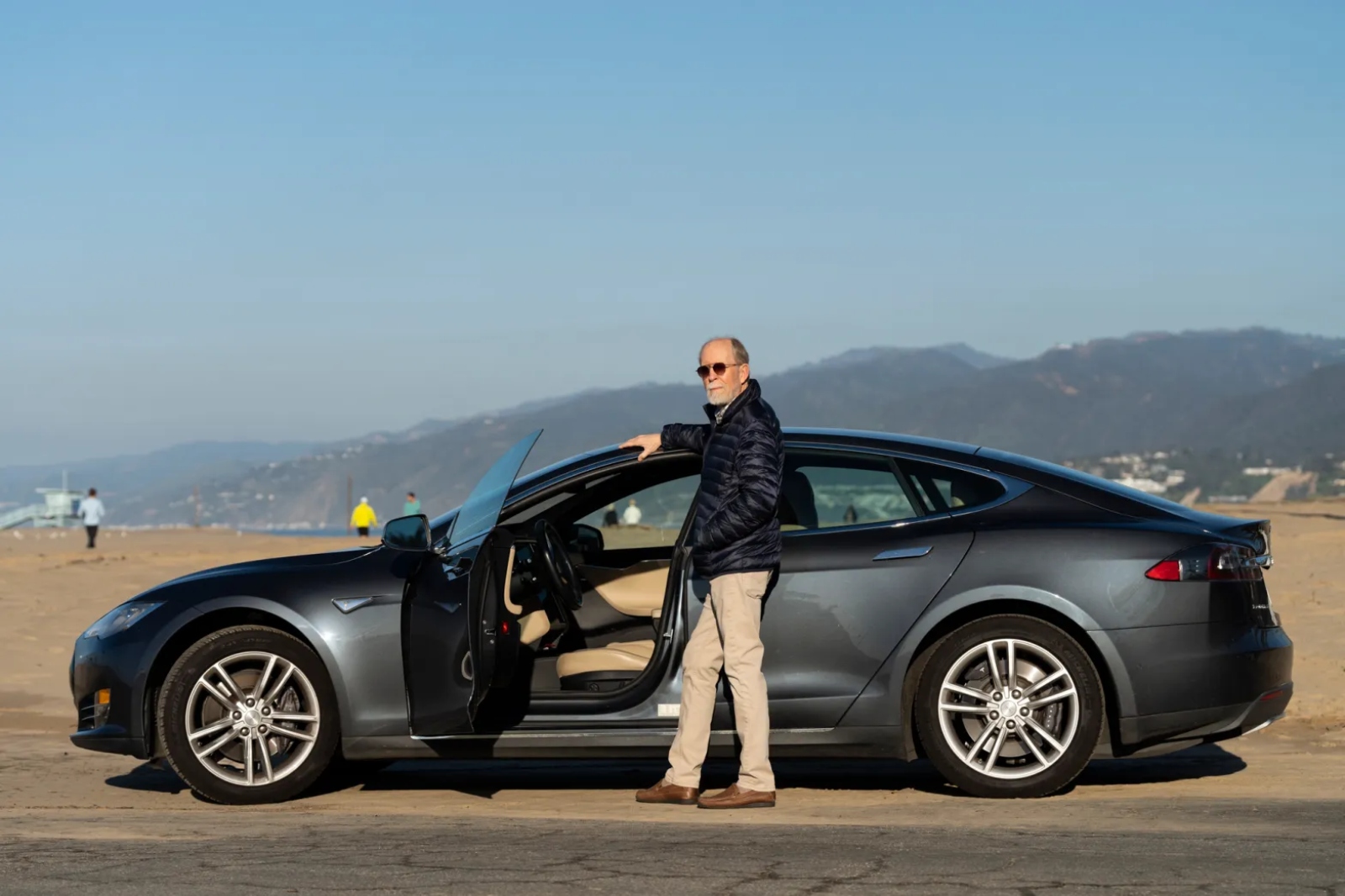
The rural dilemma: ‘They don’t want to get stuck’
Kay Ogden, 62, an avid environmentalist and executive director of the Eastern Sierra Land Trust, has driven her Ford Mustang Mach-E SUV for a little more than a year. She loves her electric car, which she purchased new for about $60,000.
But Ogden, who lives in the Sierra Nevada foothills 18 miles northwest of Bishop, said her rural community’s lack of public chargers has been a big issue for her. There aren’t enough reliable, working chargers or fast chargers for non-Teslas In Inyo County.
San Mateo County has 4,398 public chargers serving its 747 square miles, while Inyo County has just 49 chargers across its massive 10,140-square miles — home to just 19,000 residents but visited by hundreds of thousands of hikers, skiers, anglers and other tourists. Sierra County, with 3,300 residents, has just one public level 2 charger.
Ogden often drives long distances — at least 80 miles per day — to work, buy groceries, and obtain services such as medical care. The region’s cold temperatures also can substantially reduce an electric car’s range.
Ogden initially had range anxiety so she started looking for a hybrid, but changed her mind to avoid purchasing another vehicle with an internal combustion engine reliant on fossil fuels. She chose a model with a longer range, 275 miles, to help ease her anxiety.
“Going from gas, going fully electric seemed so scary,” she said. “But hybrids still have internal combustion engines. So I evolved. I decided, I’m just jumping in. I’m going for it. I’m going to go electric.”
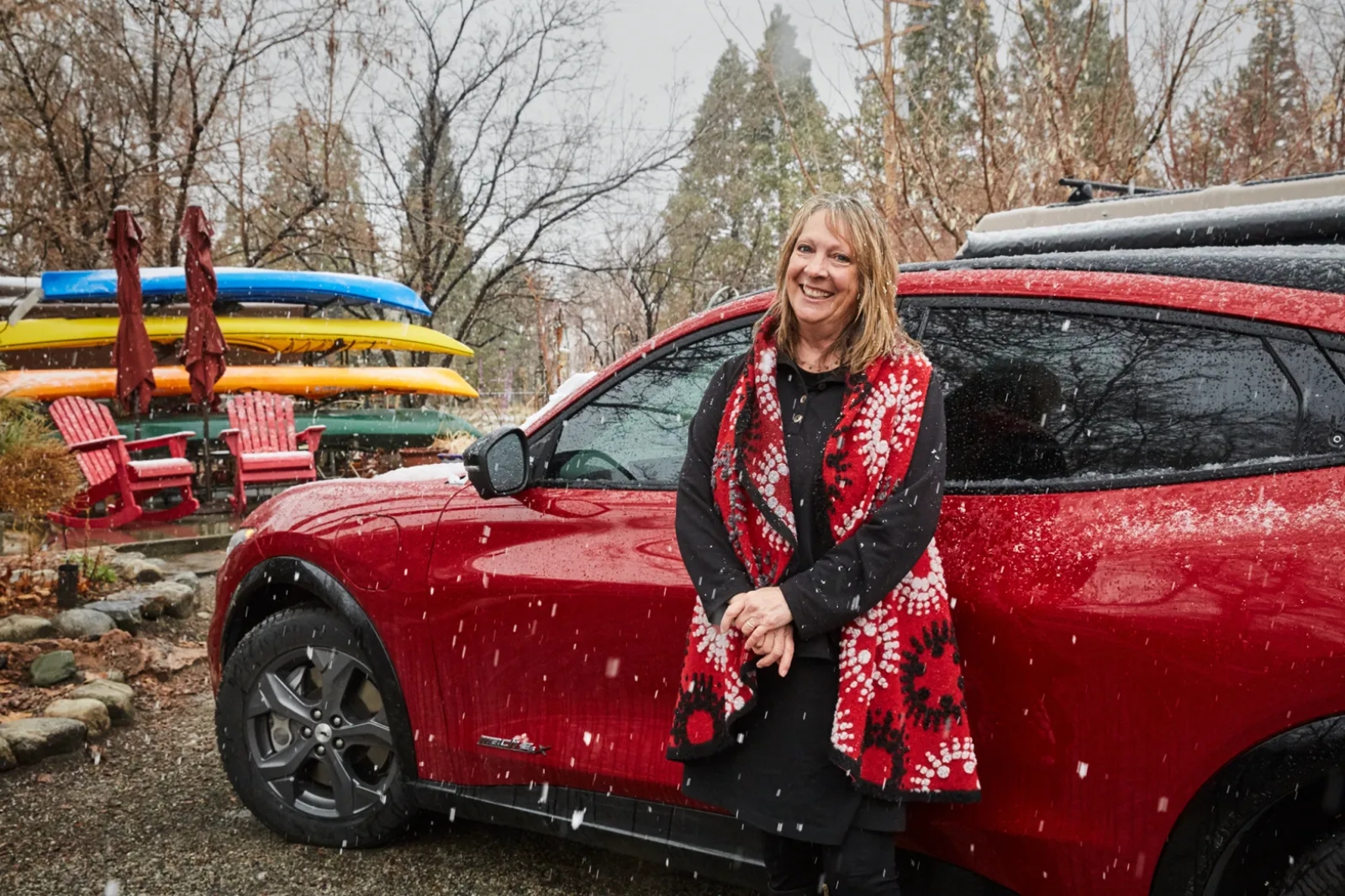
Bob Burris, deputy chief economic development officer at the Rural County Representatives of California, which represents 40 counties, said rural residents have widespread interest in electric vehicles, but the lack of public chargers has deterred many.
“They might have charging in their homes, but it is still a challenge for them to go anywhere,” he said. “They don’t want to get stuck on the side of the road, or if they’re escaping from a wildfire or a natural disaster and you need to move without readily available public charging.”
None of the top ZIP codes with high concentrations of electric vehicles are in the middle of the state — including the vast Central Valley — or in eastern counties. Instead, they are congregated along the coasts in populous parts of the Bay Area and Los Angeles, according to CalMatters’ analysis.
The unpredictability of charging stations in Sierra Nevada towns has been deeply frustrating, Ogden said.
“I go to charge at a certain place and three out of five are broken, or they’ve been vandalized and maybe there’s snow or trash piled up by one and you can’t get to it,” Ogden said. “The companies need to be held accountable for having chargers that are listed on apps that don’t work.”
More than half of 3,500 drivers in a nationwide survey, conducted by the consumer advocacy group Plug In America, reported encountering problems with broken public chargers. Another survey by the air board found barriers to charging and broken chargers.
State officials do not track numbers of broken chargers, Rasool of the California Energy Commission, said. But state lawmakers last year passed legislation establishing a reporting mechanism for broken chargers at publicly funded stations. The state also plans to inspect state-funded chargers to assess how many need repair, he said.
The new law, however, “doesn’t give us the authority to require (reports) from a fully privately funded charging station,” he said. “We’re very committed, but we do think we need to ensure the whole network — whether we fund it or not — is reliable for drivers.”
The rural county organization is helping local governments access public money and streamline their permitting process for building new charging stations.
“If there’s a pretty robust charging system in rural areas, there’s going to be more people interested in buying EVs,” Burris said. “I don’t think we’re going to hit our goals as a state unless rural areas are included a bit more than they have been in recent years.”
